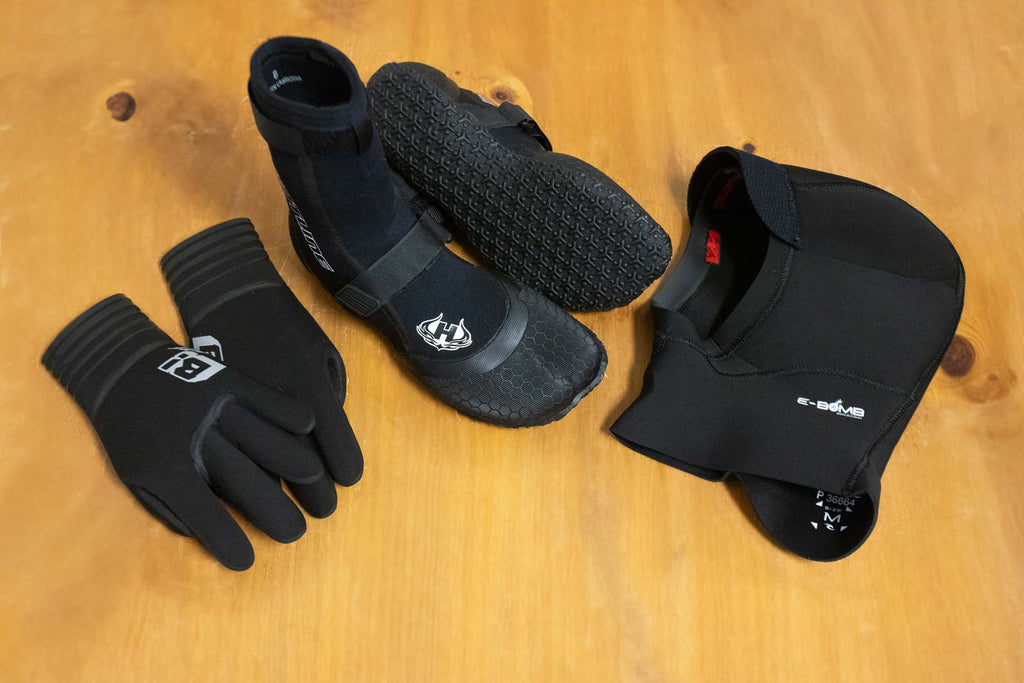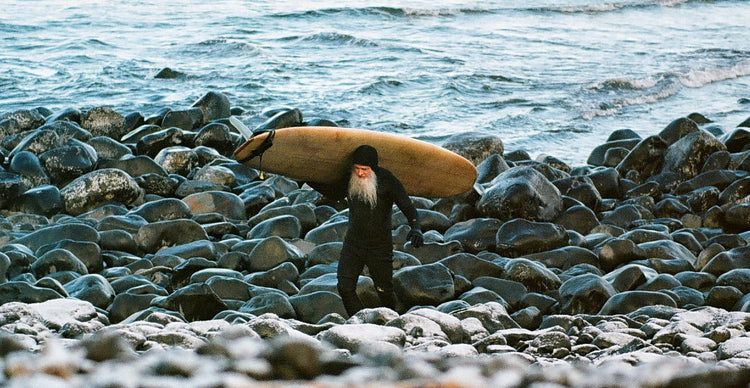The first thing to consider is what type of wetsuit you need. There are two more common types: Full Suits and Spring Suits, and within these, there are a few variations of leg lengths and arm lengths. Below is a breakdown of the main wetsuit types. Within each of these types, you’ll find a wide variety of features depending on the brand and suit, which we’ll cover later in this guide.
Spring Suit
The spring suit is a wetsuit with short arms and short legs for cool water and is typically never more than 2mm in thickness. In some cases, there are spring suits with long sleeves or no sleeves in addition to long legs or short legs.

Short Sleeve or Sleeveless Fullsuit
A wetsuit with full length legs and arms that stop before the elbow. Generally, these suits come in at 2mm thickness across the board and are great if you are looking for that extra flexibility in the arms. These suits are good for water temperatures ranging from 60 to 70 degrees F.

Fullsuit
A wetsuit that covers the entire body except for the hands, feet, and head. Made for cool to cold water and ranging in thickness from 2mm to 5mm. Depending on your water temperature, you might need booties, gloves, and a hood to accompany the suit. In some cases, there are Fullsuits with short sleeves or no sleeves. Because Fullsuits come in a variety of thicknesses, you’ll find a use for them in water temperatures as low as 40 degrees and as high as 70 degrees. One thing to note is that when shopping for Fullsuits you may not see it listed as a Fullsuit. This is because it is fairly common to call a Fullsuit a wetsuit as it is the most common type of wetsuit.

Hooded Fullsuit
If you are in the colder climates of the world, you will want a suit with an attached hood for extra warmth. A Hooded Fullsuit is a wetsuit that covers the entire body, including your head. Your hands, feet, and face remain exposed, and most people prefer to have booties and possibly gloves as well. The benefit of an attached hood is it will be more watertight than a detachable hood, but the drawback is that it is always there whether you need it or not. Most people who wear a hooded wetsuit are completely fine tossing the hood back and letting it hang out when they are feeling warmer than usual. Hooded Fullsuits are typically for colder waters in the 50’s or below and range from 4mm to 6mm in thickness.

Jacket
A thin neoprene top, usually around .5mm to 2mm thick, with a full or quarter-length zip running down the chest. Jackets are commonly used in warm waters where a little extra warmth is needed. Perfect for cold early mornings and chilly winds.

Bottom
Neoprene shorts or pants that offer additional warmth in warmer waters.

Accessories
Surf boots, gloves, and hoods can be added separately to warm your feet, hands, and head. Wetsuit accessories vary in thickness from 0.5mm to 8mm

